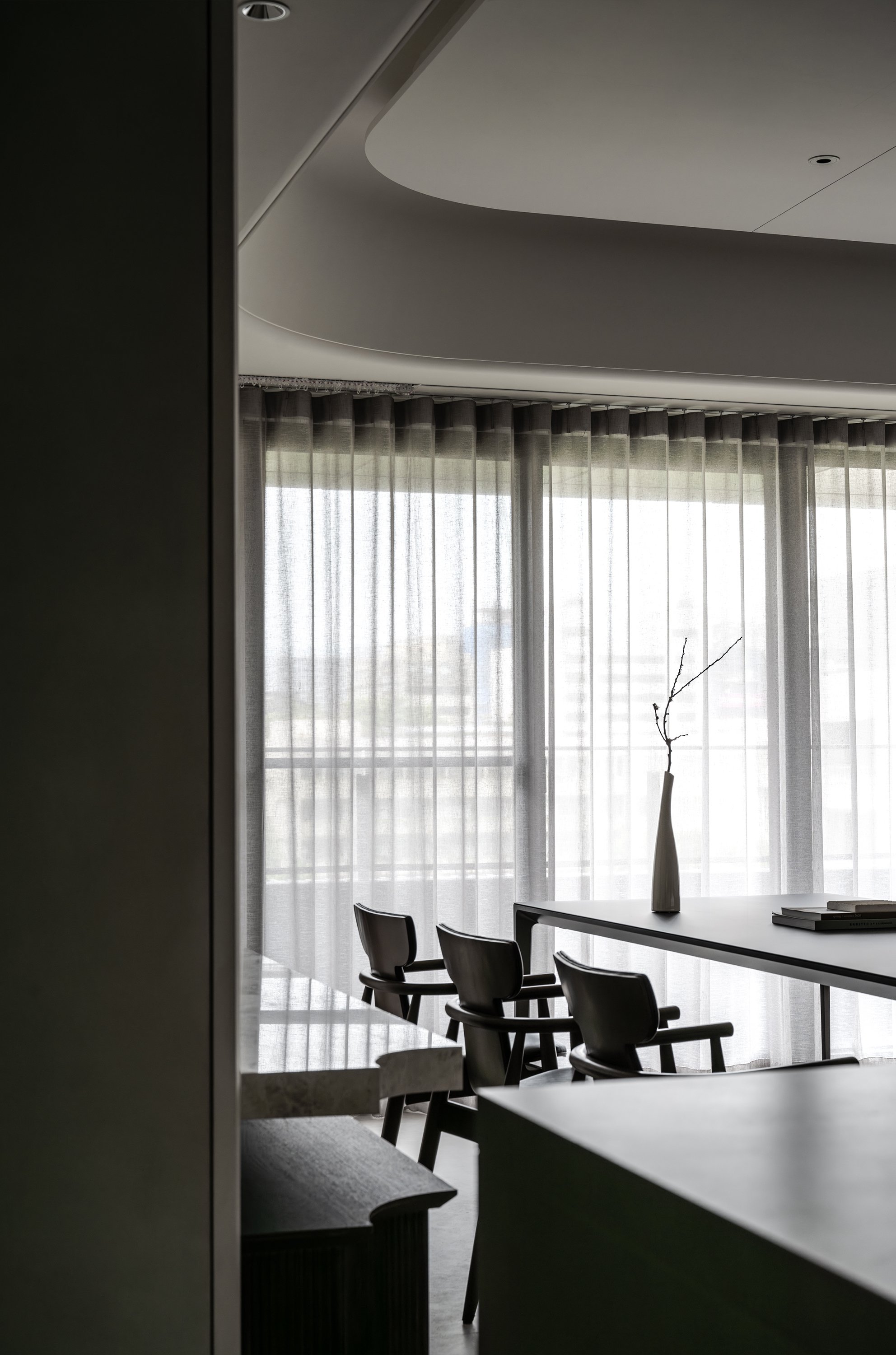
Plain by behind interior design
behind interior design, a Taiwan-based interior design studio, has transformed a 135-square-meter residence into a contemplative sanctuary where art and spatial flow take precedence over conventional entertainment-centric design.
The project challenges the prevalent trend of television-dominated living spaces, replacing the ubiquitous TV wall with a serene feature wall that showcases the homeowner's personal art collection. This intentional shift away from digital entertainment creates an environment that nurtures mindful living and meaningful human connections.
The client, an avid art collector, provided the conceptual foundation for the design. Their favorite painting served as the starting point, with its color palette and Zen-like qualities informing the spatial composition. behind interior design extended this artistic sensibility throughout the space, creating an atmosphere akin to stepping into a painting. Rather than adhering to a specific style, the interior design emerges organically from the intersection of the resident’s lifestyle and their artistic sensibilities.
The three-bedroom residence features an open-plan arrangement that connects the living room, dining area, and kitchen. A distinctive circular flow pattern characterizes the public spaces, allowing occupants to move freely and engage in spontaneous interactions. This fluid circulation eliminates spatial constraints and encourages a more dynamic lifestyle beyond passive entertainment.
A retractable pivot sliding door minimizes the space required for cabinet openings behind the dining table, while its slatted design integrates with the Zen-inspired artwork to maintain visual continuity throughout the space.
Materiality plays a crucial role in achieving spatial harmony. The walls feature textured artistic paint with subtle finishes, while large-format floor tiles echo similar tones and textures. This cohesive material palette creates a refined backdrop that allows the artwork to command attention. The ceiling design eschews elaborate treatments in favor of flowing curves that minimize visual distractions. This minimalist approach, combined with thoughtfully curated materials, contributes to a cohesive and uninterrupted spatial experience.
In the private quarters, a vertically open design connects the master bedroom with its walk-in closet, enhancing spatial fluidity and mitigating the confining qualities often present in compact residences. In the master bedroom, spherical legs provide structural support for a floating cabinet while adding a subtle sculptural element to the minimalist space.
The design employs a subtractive approach, eliminating superfluous elements to achieve consistency throughout. This marks a significant departure from the previous iteration of the space, which was characterized by disparate cabinetry, varied materials, and distracting furniture pieces
Looking toward future residential design trends, the project exemplifies a shift toward environments that prioritize comfort and natural elements over ostentatious decoration. behind interior design demonstrates how thoughtful minimalism can create spaces that support both personal reflection and social connection.
Related Content
"Woodland Whispers," an evocative exhibition by no.29, transforms the entry room of Amelie, Maison d'Art's NYC location into a contemplative sanctuary.
Fusina is a sculptural fire pit designed by José Bermúdez, paying tribute to the architectural style of Venetian architect Carlo Scarpa, with an intriguing organic shape that enhances the connection between the object and the user.
Lodes presents Cono di Luce in collaboration with Ron Arad Available from January 2024















